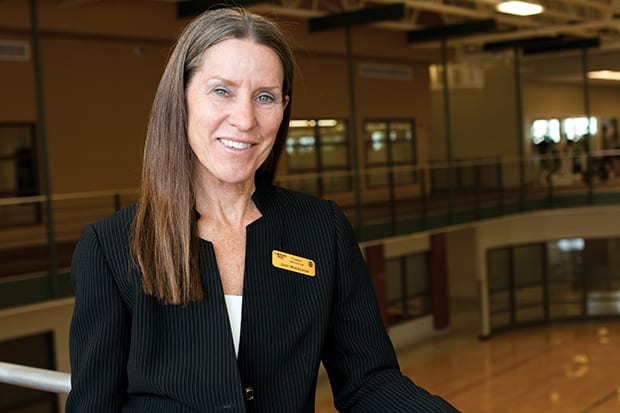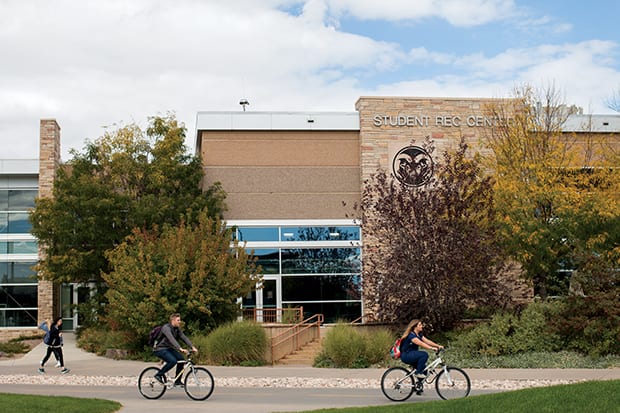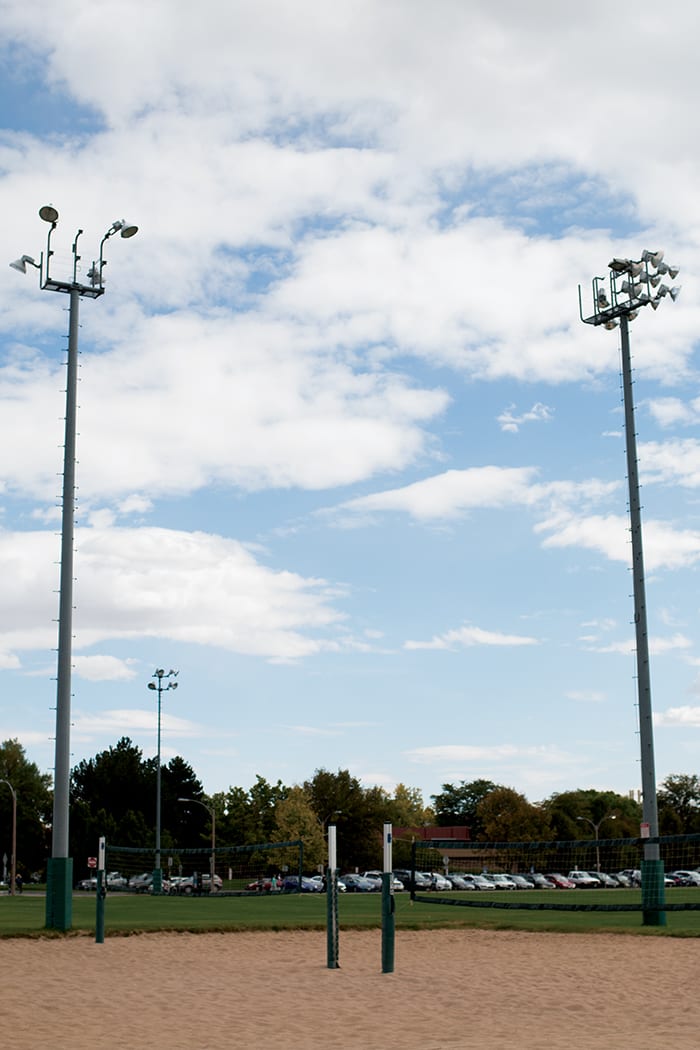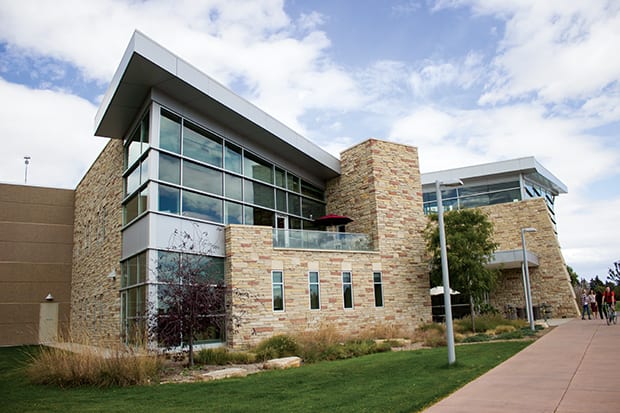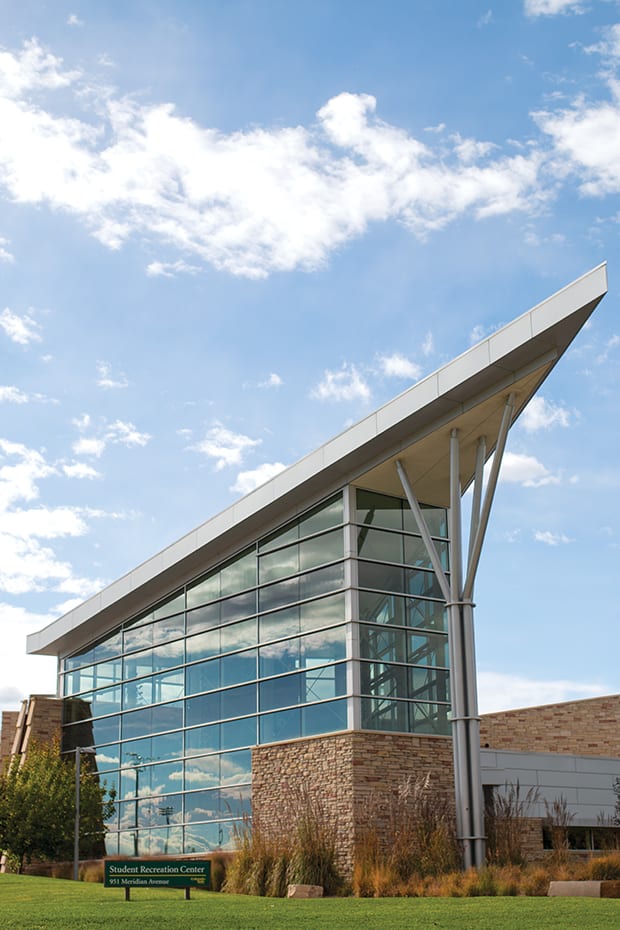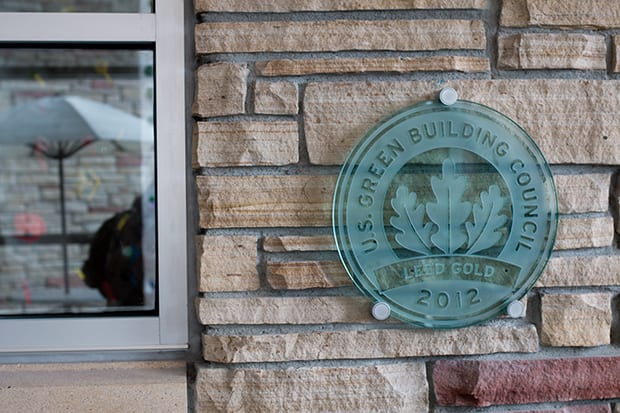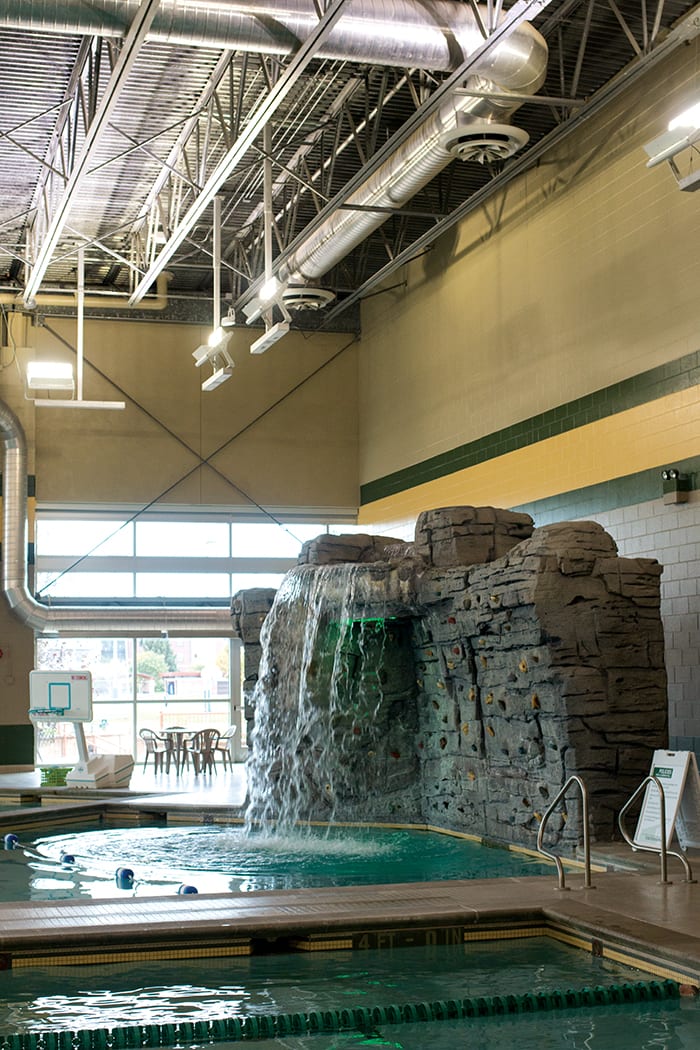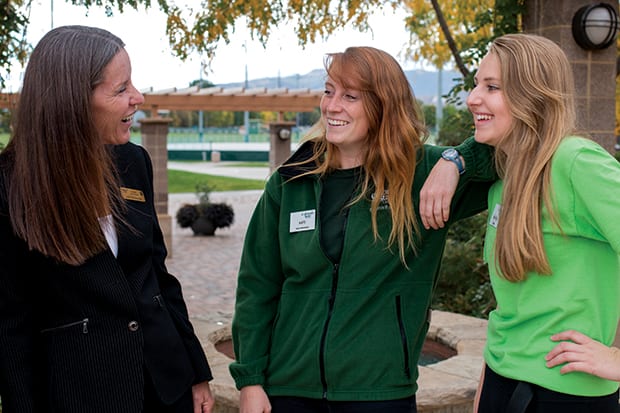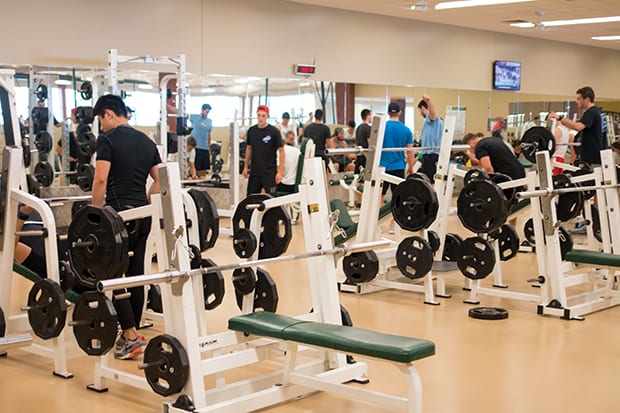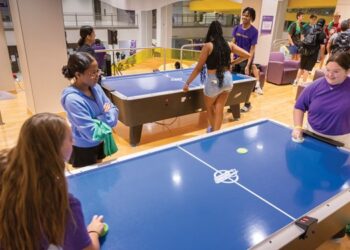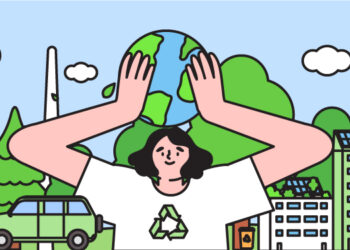It is just after 1 p.m. on a beautiful October day in Fort Collins, Colorado. The sun blazes down over the foothills, as the autumn leaves begin to turn bright shades of yellow and orange. It is a glorious afternoon, the perfect time to squeeze in those last runs, bike rides or hikes before the harsh days of winter quickly settle in.
On this splendid afternoon, you would expect students to be enjoying the outdoors or busy in class. However, the Colorado State University (CSU) Student Recreation Center is not experiencing the typical mid-afternoon lull — quite the opposite, in fact. Every corner of the Student Recreation Center is buzzing with activity. Groups of students scale up and down the climbing and bouldering wall, some play volleyball on the open courts, while others practice their martial arts and boxing skills in the mat room.
The pristine Student Recreation Center at CSU brings the atmosphere of the Colorado outdoors and nature inside, providing a high-quality recreation experience for students. However, this was not always the case. Prior to its expansion and renovation, the Student Recreation Center lacked space, natural light and the wide range of opportunities for students to seek a healthy lifestyle.
As with any renovation, the project took time. Planning and design for the updated Student Recreation Center began in 2005. Approvals commenced in 2008 and the first phase of the project was completed in 2010, with the second phase wrapping up in 2011, revealing an almost unrecognizable Student Recreation Center. “We have enjoyed our brand new, large facility,” said Judy Muenchow, the executive director of recreation at CSU. “It has been a major impact for the students at CSU. In general for the university, the Student Recreation Center was one of the first projects that was put into the master plan in terms of making the campus have a cohesive look. We were one of the first buildings to have some signature aspects to the design that is now used for most buildings on campus.”
While the Student Recreation Center was constructed in 2011 to meet the immediate needs of the growing student population, the department kept its eye on the future. “Every recreation program on a campus is unique,” said Muenchow. “What works at CSU doesn’t work somewhere else, and what works somewhere else might not work at CSU. But what I think CSU did really well, in terms of our facility, was we designed it to meet the immediate need, but made sure the facility would accommodate future needs of the student population as well.”
However, guiding every decision for Muenchow and the rest of the Campus Recreation department is their core values — community, development and integrity. These are infused in everything from the facility to programming to student training. “We live by those and that is very clear to our colleagues across the country, both by looking at our website or by coming to the facility and looking at how we do our training for our students or how we deliver our programs and services,” she explained. “I believe that the heart and soul of Campus Recreation at CSU is our values, and we reflect those values in everything we do. It makes CSU maybe not unique, but respected.”
Muenchow and the rest of the department worked to ensure these values were upheld during the expansion and renovation of the Student Recreation Center. They wanted the updated facility to reflect the values and provide an inclusive, welcoming environment for the entire campus community. During the design process they worked with the LGBTQ office and students on campus to incorporate various elements of inclusivity into the design of the facility.
Along with gender-inclusive restrooms and locker rooms, the Student Recreation Center offers a lactation room for nursing mothers, braille on a variety of fitness machines, and workout areas designed to accommodate various skill and comfort levels.
Besides promoting these values for all who participate in campus recreation activities at CSU, the core values are also instilled in all employees who work within the department — professional and student staff. According to Brittany Heiring, the marketing and communications manager for CSU Campus Recreation, the way the department is structured with its internal committees helps to achieve the goal of imparting leadership development, community and integrity within all staff.
For example, the Student Staff Development Committee is in charge of leadership and development opportunities for students. They plan and execute the development for all student staff, which occurs twice a year. “The angle of this is not a training, but a development opportunity,” said Heiring. “We come together, reiterate the campus mission, vision and values each year, but then we also bring in outside speakers to talk about things like inclusionary practices, resources for disabled students and things like that.”
Other internal committees include the Inclusivity Committee that is in charge of hosting education trainings and developing educational materials on inclusion practices for students. The Employee Appreciation Committee is tasked with developing fun team events for the student employees. “We do the Rec Olympics and then at the end of the year we have an employee appreciation banquet,” said Heiring. “That is again really intentional in trying to show our students that we really do appreciate them.”
While Heiring explained having these internal committees helps to foster community and development among staff, upholding the core values also involves individual commitment. “We are structured really well with the committees, but it is also an individual buy-in as well,” she said. “Everyone buys into the mission. Each professional staff member upholds it, but then the student staff, especially some of our veteran staff, live those values of really being a community.”
With all of these development opportunities, student staff members are afforded the opportunity to excel, learn new skills and grow. At the Student Recreation Center at CSU, Student Supervisors essentially run the facility. According to Muenchow, professional staff can’t be there every hour the facility is open, so the students need to be properly trained and equipped to manage the facility.
Heiring explained Muenchow gives this autonomy to all the staff, which is something that has garnered her a lot of respect over the years. “Judy is so professional in what she does, but she also trusts us so much in our own expertise and our own roles,” said Heiring. “I am constantly supported, but I am very autonomous in my role and in making higher-level decisions for my area. Working with Judy, she is so supportive and trusting with what you do that it makes you want to work harder and do better. That idea of never settling is because her talents and her professional nature inspire you. She gives us the space to do our job, so we can do an amazing job.”
And Muenchow’s tactics seem to be paying off. By providing both professional and student staff with increased responsibility and autonomy to do their jobs, they are inspired and motivated to excel within their roles. When Zachary Webber first started working at the Student Recreation Center as a student staff member, he had no intention of pursuing a career in campus recreation upon graduation. However, now it is something he is seriously considering.
“The recreation center offers a lot of development opportunities, training and programs,” explained Webber. “One lesson I have learned is to make the best of what you have. A lot of people don’t realize their jobs can help them in the future — so taking what I have learned here and being able to apply it once I am out of school. They have done a good job of showing me the skills I have learned and how I can present that in the future.”
Even though Muenchow started her career in collegiate recreation almost 40 years ago, the excitement in working with students and watching them thrive has yet to grow old. “Working in higher education is such a joy because you have students to work with,” explained Muenchow. “Either you have students working with you side by side to deliver programs and services or you have students participate in them. It is such a joy to see the growth, development, leadership and sheer social abilities that are developed as students participate in recreation or work alongside of you.”



